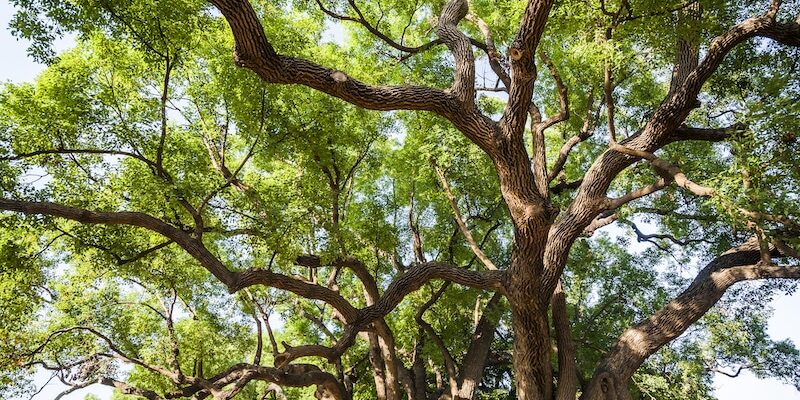
8 Florida Invasive Trees
Florida invasive trees can damage native trees and plants. Especially since Florida has such a rich ecosystem of plants. Unfortunately, Florida is also an area with an increasing number of invasive plant life.
Florida invasive trees and plants can affect the health of entire forests and ecosystems, increase costs to manage ecosystems, and endanger local animals. Invasive plants can cause harm to local plants, especially those that are already endangered, and change the natural impacts that fire and water have on a landscape. If you think you have any of these plants, contact our arborist that can answer any questions and help remove unwanted or unsafe trees.
According to the Florida Forest Service, approximately one-third of the Florida invasive trees and plant species that grow on their own without cultivation are non-native. These plants should never be planted by anyone living in Florida.
Melaleuca
Native to: Australia, Papua New Guinea, Indonesia, New Caledonia
Scientific name: Melaleuca quinquenervia
About: The Melaleuca tree was first brought to Florida to act as a shade or windbreaking tree. In the 1930’s it was planted on Lake Okeechobee to stabilize the levees that are present there.
The impact: The Melaleuca is invasive because of its ability to spread its seeds far and fast in the wind. It can grow in almost all climates, including in the water. These Florida invasive trees have been devastating in the Everglades. You can see the Melaleuca taking over acres of the Everglades, which has altered water flow and impacted wildlife.
Brazilian peppertree
Native to: Brazil, Argentina, Paraguay
Scientific name: Schinus terebinthifolia
About: The Brazilian Peppertree can cause dermatitis, much like poison ivy or oak. It is in the same Anacardiaceae family as poison ivy and oak.
The impact: This tree is one of the most aggressive in Florida. It is very dense and blocks sunlight for all native species around it. Their seeds have a 70-100% survival rate, making it easy for them to duplicate.
Australian pine
Native to: Australia, South Pacific Islands, Southeast Asia
Scientific name: Casuarina species
About: Although these plants are referred to as pines, they aren’t actually conifers at all. They are typically found in Central and South Florida.
The impact: The Australian pine works to displace other native species and changes entire communities of plants. They have an extremely aggressive growth rate that overwhelms other species.
Camphor tree
Native to: China, Taiwan, Korea
Scientific name: Cinnamomum camphora
About: The Camphor tree was imported in 1875 and was used in Camphor production. Now, it is not used in any production but has made its way into the natural ecosystems in Florida.
The impact: These trees mostly invade dry areas, like the side of roads. The Camphor tree is one of the main reasons the Florida jujube is now endangered.
Florida Tree is the most trusted and top rated Tree & Ground Maintenance company in the area. But don’t take our word for it, see what your neighbors are saying about us and read our reviews.
Mimosa Tree
Native to: Tropical Asia
Scientific name: Albizia julibrissin
About: The Mimosa tree was imported in the mid-1700s and was used as decoration. These Florida invasive trees are very fragrant and has beautiful flowers, which is why people still grow this tree today.
The impact: The mimosa tree grows in almost any soil and quickly grows back if damaged. It is very dense, so it steals sunlight from surrounding plants. It frequently becomes an issue on water banks because its seeds can be transported by water.
Orchid tree
Native to: India, China
Scientific name: Bauhinia variegate
About: Because of its beautiful flowers, the Orchid tree was brought here in the 1930s. It mainly grows in the Central and Southern Florida.
The impact: The Orchid tree is highly invasive, despite its beautiful appearance. It is very fast growing and can live in almost all landscapes, which makes it hard to remove.
Lead tree
Native to: Mexico and Central America
Scientific name: Leucaena leucocephala
About: The Lead tree has been used in timber production and green manure. It was also an ornamental tree that helped people control erosion and provided shade.
The impact: The Lead tree grows very quickly and is unfazed by drought. These Florida invasive treed are also very dense and kills native plants by stealing their sunlight.
Tung Oil tree
Native to: Central and West China, Vietnam
Scientific name: Vernicia fordii
About: The Tung Oil tree is incredibly toxic to wildlife and humans. In some cases, it can be fatal. They were originally planted for their seeds but were also beloved because of their beauty. Their seeds are used in the products of a lot of household items, including paint, resins, artificial leather, and varnishes.
The impact: Tung Oil trees spread their seeds very effectively. They don’t take over areas very quickly, but they survive in many environments, making them a highly invasive plant.

